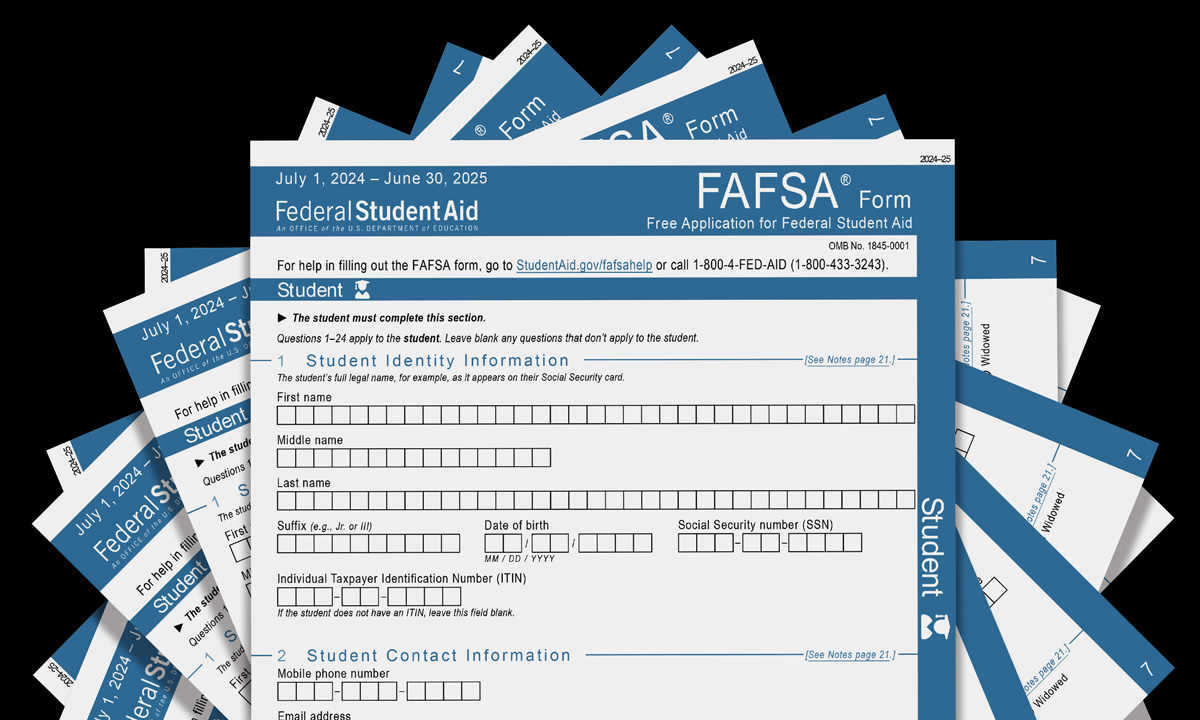Colleges Must Extend Enrollment Deadlines after FAFSA Delays
Stulberg: With financial aid info coming late this year, students like mine will have to rush making the most important decision of their lives.

Get stories like this delivered straight to your inbox. Sign up for The 74 Newsletter
Every March, my North Star Academy Lincoln Park High School students anxiously await financial aid offers from colleges and universities. But this year, they may not know how much financial assistance they will receive until May or June. That’s a devastating timeline for students from the low-income communities my school serves — they’ll have less than a month to figure out the next four years as they get ready to make the biggest decision of their young lives.
Colleges and universities need to relieve students and their families of this added stress and push enrollment deadlines from May 1 until later in the spring or early summer.
Colleges are unable to create financial aid packages for their students without crucial information contained in the Free Application for Federal Student Aid — FAFSA — which is administered by the U.S. Department of Education. At the end of January, the department notified higher education institutions that it could not forward students’ FAFSA forms until the first half of March.
That means colleges will receive crucial financial information at least six weeks later than previously announced, and already months later than in previous years. In turn, already short-staffed financial aid offices will have to scramble to put together offers so that thousands of students can make their college enrollment decisions by May 1.
One of them is Nicholas Onaiwu, a senior at my high school for whom college seemed like a far-fetched dream because his family could not afford tuition. Then Nicholas started visiting some local colleges. We worked with him on his personal statement, helped him prepare for college interviews and made sure he filled out his FAFSA and looked into state grants. College became a reality that he was excited about, and all of a sudden felt within reach. But when he found out about the FAFSA delay, he felt that his dream was in jeopardy. He was anxious about having a smaller window of time to analyze financial aid packages, pursue internships near the college that gives him the most aid and make a thoughtful, well-informed decision.
The change doesn’t just impact the 19,000 students at the Uncommon Schools network where I work; it affects more than 17 million students nationwide who rely on the FAFSA to determine federal financial aid, Pell Grants, student loans and work-study programs.
The delays are caused by an effort to improve the FAFSA and fix a $1.8 billion mistake that would have dispersed less aid to students from mostly economically disadvantaged communities. The new process, revised after Congress passed the FAFSA Simplification Act in 2020, makes the form shorter, and 600,000 students with financial need will receive Pell Grants for the first time due to a change in eligibility guidelines. These much-needed modifications to FAFSA are a crucial step toward ensuring that college continues to be a path to the middle class for millions of young Americans.
But the new form didn’t come out until Dec. 30, 2023, and on Jan. 30 the department said it was making a last-minute fix so take the latest inflation data into account. This domino effect of delays has put colleges and families in a bind.
Nine higher education organizations, including the American Association of State Colleges and Universities, are urging colleges and universities to move their enrollment deadlines. In a joint statement, they said, “During the pandemic, many institutions extended their enrollment, scholarship and financial aid deadlines beyond the traditional May 1 date, and we urge institutions to make similar accommodations this year. We all want students and families to have the time they need to consider their financial options before making enrollment decisions.”
Some colleges, like the University of Illinois, have already decided to push their enrollment deadline, and others are considering it.
The right thing for colleges and universities to do is to move their enrollment deadlines to at least June 1, so students and their families have time to make reasoned and well-informed decisions about this monumental investment in their futures.
My students and their families have spent years preparing for this moment, from learning how to read in kindergarten to staying up many late nights working on college applications as high school seniors. They have worked hard and dreamed big. The least colleges can do is give them and their families a few extra weeks to decide what is best for their future.
Get stories like these delivered straight to your inbox. Sign up for The 74 Newsletter

;)
